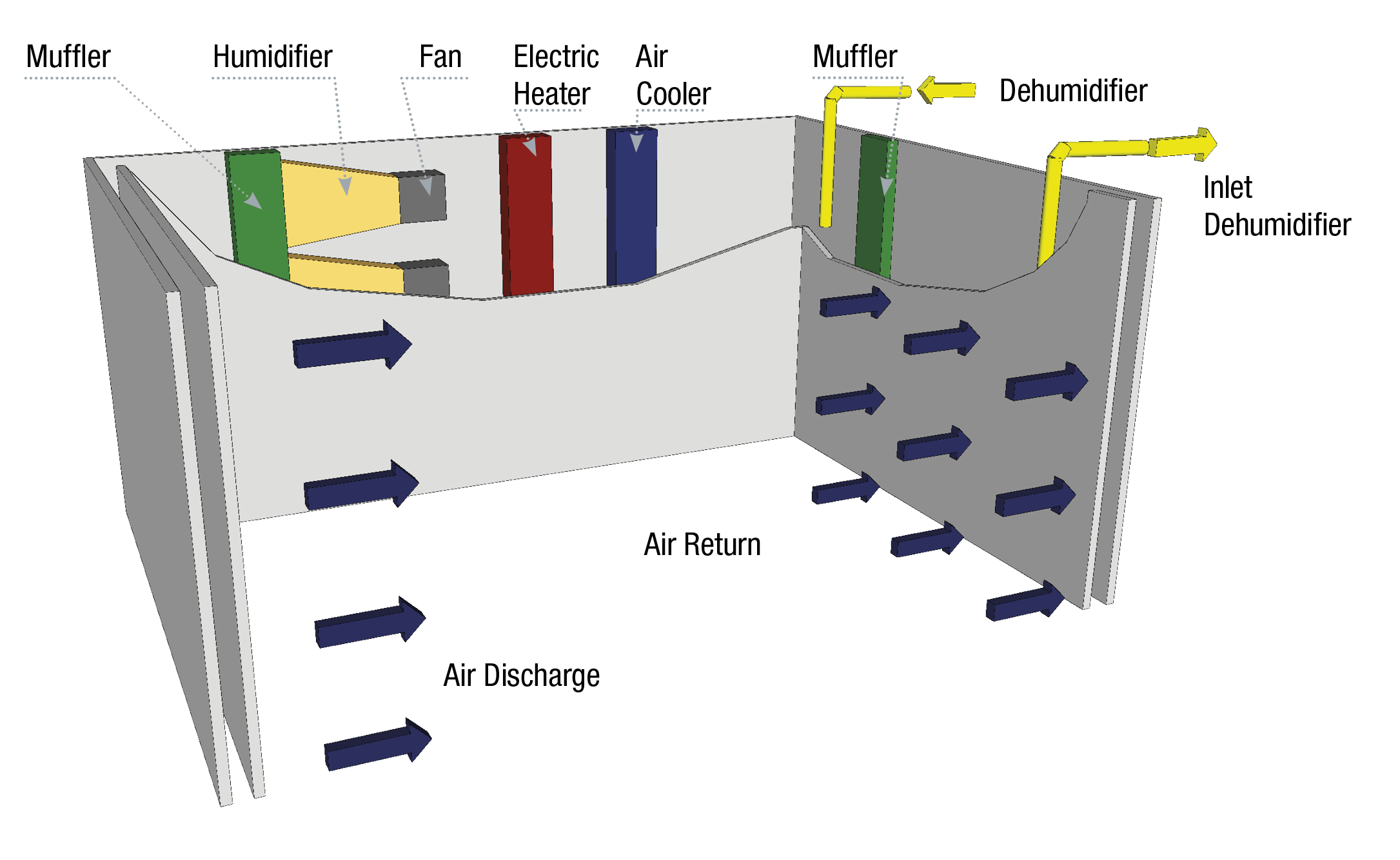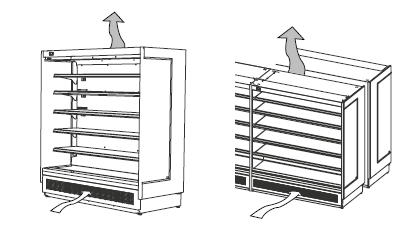Sustainability
Thinking about the future
Sustainable development is at the heart of Celsior’s concerns. As such, Celsior continues to improve the environmental performance of its products, services and industrial operations, but has also implemented a sustainable development policy aimed at protecting our natural environment. All new products developed by Celsior must meet our desire to protect the environment.
With each of our innovations, we will strive to optimize the resources used to preserve natural resources for future generations. In short, at Celsior, we will continue to do what we have always done: put the environment at the center of our concerns, highlight innovation and think about the future.
Energy Consumption
Temperature Performance
Function and Certificates
Energy Consumption
Efficiency & energy saving
The high efficiency of Celsior products will allow you to reduce your energy consumption and optimize your maintenance costs. Plus, technologies are integrated to reduce energy consumption (EC motors, frequency drive on compressors, floating condensing pressure, heat recovery using heat pump, specific algorithm to optimize controls).
Control and regulation
Celsior also offers you a wide range of regulatory solutions to combine energy efficiency and intelligence of the management of consumption.
Innovative products oriented to energy savings
Celsior is dedicated to partnering with customers to help reduce operating costs and environmental impact despite spiraling energy prices, increasing energy consumption through longer store opening hours and constant expansion of the range of goods to be refrigerated. To tackle these challenges, Celsior offers innovative solutions like the CO₂OLtec•Evo system, which uses the natural refrigerant CO₂ to help customers reduce energy costs by up to 30% compared to standard transcritical system.
All 60 bar CO₂ evaporators now operate with 90 bar expansion valve & liquid line for extended operation flexibility.
Measuring temperature performance
Celsior declares the temperature performance of the cabinet according to the ISO 23953 standard, which defines the refrigerated cabinet requirements and test conditions.
ISO 23953 – Refrigerated display cabinets classification, requirement and test conditions
The refrigerated display cabinets are classified according to the standard ISO 23953. This standard defines the classification, requirement and test conditions for representative refrigerated display cabinets including the minimum size of the test room, side air-flow, light intensity, temperature and humidification control, calibrated measurements etc. Thanks to ISO 23953 customers can compare temperature classification according to the same testing procedure for all manufacturers in Europe who strictly follow the standard.
Climate room requirements and setup
ISO 23953 defines exactly the requirements and tolerances of a climate room including:
- Size of the room
- Side airflow speed and direction relative to the cabinet
- Calibration of the measurement equipment
- Where to place the cabinet in the climate room
- Color of room and light intensity

Example of Celsior testing room. The above picture illustrates how a climate room for testing the refrigeration equipment looks like.
Temperature class – describes the temperature performance inside the cabinet
The temperature performance is tested in a cabinet with product simulation dummies which are called M-package. The M-package simulates thermal characteristic of meat products.
Cabinet Temperature performance means:
- How good can the cabinet hold the temperature of a chilled or frozen product – simulation dummies at lab climate conditions
- How small is the cabinet storage temperature of product simulation dummies at lab climate conditions
- Temperature performance is tested by simulating different operation use cases: shop closed (light off, night curtain down, no door opening) shop open and commissioning of cabinet (doors / lids long open) shop open consumer take products (regular door / lid opening)
There are three main temperature class groups: Low, Medium and High temperature. These main groups are split in different temperature classes indicated by a number following the group letter: Example M2. The higher the number the higher the difference between the lowest M-package temperature and highest M-package temperature.
Example: “Temperature Class M2”
(Medium temperature class 2)
Warmest M-package: max. +7°C
Coldest M-package: min. -1 °C
Link between climate class and temperature class
Because the temperature inside a cabinet is strongly influenced by the environment’s temperature and humidity, the temperature class is only a meaningful declaration if it is linked to a climate class. For this reason, a full cabinet declaration always consists out of climate class and temperature class.
Example “3M2” (At climate class 3, the cabinet reaches temperature performance M2)
3 = climate class (certain ambient test condition during cabinet test)
M2 = Temperature class (specified highest and lowest M-package temperature)
Laboratory vs. operation in real store environment
According the ISO 23953-2 standard Appendix B are significant different operation conditions between lab and store operation especially for remote cabinets. The following section describes and explains the difference to the application in the field.
Difference between laboratory and store data for remote cabinets
The conditions of a remote cabinet in the store differ very much from the lab conditions. Usually the cabinets in a store are multiplexed, located against a wall and the ambient conditions are lower. Using directly lab data for remote cabinets would lead to an oversizing of piping and compressor packs. Based on this Celsior provide for E6 remote cabinets in the technical data sheets rack sizing data for the standard configuration at store condition 25 °C / 60 % rel. H. and 22°C / 55 % rel. H. This data are already made for investment and file optimized sizing of rack and piping.
Based on the long Celsior expertise in refrigerant system design our general recommendation is:
- Rack design data 25/60 application: Stores in warm climates, stores with difficult climate situations, cabinet in a non-ideal place (high humidity, high temperature, close to a door etc…)
- Rack design data 22/55 application: Store in middle and north Europe, stores with moderate climate (with air conditions, multiplexing remote cabinets)
Technical data for plug-in cabinets
To have comparable energy consumption within the Celsior range, we specify the energy consumption for the standard configuration of plug-in cabinets according to ISO 23953 and climate class 3 conditions. This makes the data comparable; however, the real energy consumption in a store is usually lower.
Influence of the cabinet installation on the performance
The installation can have major effects on the energy and temperature performance. There are some requirements, which need to be kept to ensure that the cabinets are working properly.
- Do not install the cabinet outside or next to heating radiators or other heat sources.
- Keep a distance from the wall as indicated in the operating manual.
- Avoid direct sunlight radiation impact.
- Keep free the air intake and outlet area (only plug-in).

Example of a plug-in cabinet which needs free air flow on front and top of cabinet.
Celsior internal testing
To ensure a long life-time and proper operation, Celsior has defined internal standards for robustness and stress tests of cabinets as well as components.
Static robustness test
To ensure the load and shelf strength, all shelves are loaded with a certain weight for several days. The deflection of shelves during time must be under a certain acceptable limit. Other critical test: the cabinet structure and base are subjected to defined static loads to test the mechanical durability of the overall cabinet. We define our cabinets and components to pass the highest levels of industry strength Celsior ensures a high-quality product with long and stable years of operation.
Dynamic testing of doors and lids
During the use in supermarkets a glass lid simulates several years of lifetime of door, hinges, and handles within a few weeks. During the test cycle the lid is continuously moved and checked in several situations (break / damage / long opening). During the test the system is also simulated several times off-line and simulated stress (e.g. through the use of software or hot gas injection) is executed. Our test cycle for the dynamic lifetime increases the longevity of a cabinet and makes sure that the tested design has reliable user time record. It ensures that the tested system works properly in the stores and does not get customer complaints within the given store years.
Packaging and shipping test
Before it is shipped, each cabinet conducts a special packaging and transportation test. This happens with one or several cabinets in a truck going on a defined road with various road conditions. After the transport, the cabinet and the packaging are checked visually. This ensures that the cabinets will arrive to our customers in the same condition as they were packed in the factory.
Functioning of furniture
- A piece of furniture is designed exclusively to keep fresh food products at temperature.
- The storage temperature of the product must be compatible with the application temperature of the furniture and in accordance with the legislation in force.
- The furniture is designed for the preservation of products and not for their temperature. For this purpose:
- DO NOT PLACE products at a higher temperature than the furniture.
- DO NOT EXCEED load and load limits.
- REFER to the label in the cabinet.
- DO NOT OBSTRUCT air inlet and outlet grids.
- LEAVE free spaces between products for air circulation.
- MAKE periodic product rotation.
CE (European Conformity) certification
The Celsior cabinets are compliant with the relevant standards or parts of the standards as confirmed with the CE declaration of conformity:
- ISO 23953-1 (Refrigerated display cabinets, general)
- ISO 23953-2 (Refrigerated display cabinets, requirement)
- EN 60335-1 (Household and similar electrical appliances. Safety. General requirements)
- EN 60335-2-89 (Safety requirement for household and similar electrical appliances, particularly for commercial refrigerating appliances)
To ensure maximum safety, all plug-in cabinets with flammable refrigerant are additionally CE certified by an independent body.
Factory certifications
All Celsior cabinet factories have a certified quality management and environmental management systems.
- EN ISO 9001 (General quality management system)
- EN ISO 14001 (Environmental management systems)
All 60 bar CO₂ evaporators now operate with 90 bar expansion valve & liquid line for extended operation flexibility.
Let me know if you want this formatted for web or converted into HTML.



